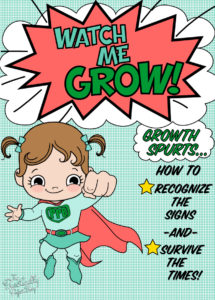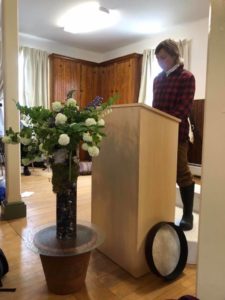 Tucked away in the charming lobster fishing town of Stonington, Maine, a group of about 100 students gathered this past week for this year’s Wisdom Ingathering, exploring together with Cynthia Gurdjieff’s five Obligolnian Strivings in the mornings, and the 8 conversation-starter points that Cynthia recently published in a blog (“Whur We Come From”) on the key components of what comprises our Wisdom “lineage” during the afternoon sessions.
Tucked away in the charming lobster fishing town of Stonington, Maine, a group of about 100 students gathered this past week for this year’s Wisdom Ingathering, exploring together with Cynthia Gurdjieff’s five Obligolnian Strivings in the mornings, and the 8 conversation-starter points that Cynthia recently published in a blog (“Whur We Come From”) on the key components of what comprises our Wisdom “lineage” during the afternoon sessions.
Sprinkled throughout our time together was the usual rhythm of teaching, conscious work, and prayer that marks all of our Wisdom work… but this particular gathering carried a unique energetic signature that felt decidedly different. As all mothers can attest to, the signs of a growth spurt are usually evident in the preceding days in an angsty, unusually sensitive child. Suddenly they’re waking up at night, tossing from the discomfort of physical change that is often achy… but lack the self-awareness to be able to name what it is that they’re sensing.
 I’ve been living this recently with my five-year-old son Rowan. For three nights in a row he woke up, stumbling into my room, restless and uncomfortable… half asleep and unable to communicate clearly except for a moaning jumble of half-words of need. As a mom, I know the routine: I comfort him, give him Tylenol if it’s a particularly boisterous achy-moan-stumble-mumble-jumble…but I’ve seen these rhythms enough to recognize the signs and trust that in a few days his body will rest from the strain of growing and stabilize back into a fallow period.
I’ve been living this recently with my five-year-old son Rowan. For three nights in a row he woke up, stumbling into my room, restless and uncomfortable… half asleep and unable to communicate clearly except for a moaning jumble of half-words of need. As a mom, I know the routine: I comfort him, give him Tylenol if it’s a particularly boisterous achy-moan-stumble-mumble-jumble…but I’ve seen these rhythms enough to recognize the signs and trust that in a few days his body will rest from the strain of growing and stabilize back into a fallow period.
Looking back on the past year it’s clear that our Wisdom community has been in a period of great growth and change and in many ways this Ingathering has carried all the tell-tale markers of growing pains. All week I felt an underlying communal energetic restlessness, a shared heightened sensitivity, and it wasn’t until the very end of the week (accompanied by the first sign of blue skies) that I was able to get a glimpse into where and how a particular growth shift may be stretching us.
As we explored the Five Strivings and the 8 components of our Wisdom lineage together, we spent some time exploring the evolutionary shifts from First-Axial Age religions—which carried the huge burden of transitioning from un-differentiated group-think to individual responsibility and agency—to what scholars are calling the dawn of the “Second-Axial Age” in which we’re being invited to shift from separate-self or individual-identity to a cosmic whole-self identity, in which the part (and the particular) is identified only in and from the whole in which it is nested.
 Heads nodded up and down as this concept was presented, as this is not at all the first we’ve heard of it. Cynthia began really driving this insight into our shared collective view when we first dug into “The Year of Teilhard” and played with our understanding of “scale” and deep time. From where we sit things can appear chaotic, but as we zoom out we can see the ways that all of this evolutionary “reaching out in the dark” is moving us closer and closer to collectivity and planetary identity. Leaning on the Law of Three, we’ve worked with re-orienting our typical flight away from conflict, to learning how to hold tension and work with “third force” to serve a shift out of impasse.
Heads nodded up and down as this concept was presented, as this is not at all the first we’ve heard of it. Cynthia began really driving this insight into our shared collective view when we first dug into “The Year of Teilhard” and played with our understanding of “scale” and deep time. From where we sit things can appear chaotic, but as we zoom out we can see the ways that all of this evolutionary “reaching out in the dark” is moving us closer and closer to collectivity and planetary identity. Leaning on the Law of Three, we’ve worked with re-orienting our typical flight away from conflict, to learning how to hold tension and work with “third force” to serve a shift out of impasse.
Teilhard and Gurdjieff have been forming for us two powerful pillars of teaching, bookending either side of the collective and the individual work with a powerful and inspiring cosmic vision, and the disciplined practical path of what it might take to get us there. As a Wisdom cohort, I must say, we’ve gotten quite adept at zooming out to this great Teilhardian “cosmic” view-finder and zooming back into a practical Gurdjieffian commitment to the work of transitioning from “individuals” to transformed persons (ones in whom the “whole” resounds). But it strikes me that we are being invited to now hold the cosmic view of collectivity even as we zoom back into the level of where our new growing edges are.
How do we begin to speak of personhood at the collective level? Can we begin to see our Wisdom lineage, and the other lineages with which we share the spiritual ecosystem, not as separated “communities” but instead as so many currents within a greater collectivity binding and moving through our communities? Can we begin to see all our many communities interwoven as co-inherent collaboratives?
“But wait a minute!” you might be thinking. “Surely we are already a co-inherent community… we have Wisdom networks all over the country, and isn’t this why Cynthia laid out for us the 8 points of our lineage… so that we could see the markers of what makes and unites our community?”
Well… yes, and no.
Like all bakers will tell you, naming all the ingredients of the cake will not a cake bake. And while the ingredients that shape our unique body of Wisdom in this lineage are absolutely critical to name so that we can deepen into greater clarity about the specific post we’ve been asked to hold at this evolutionary juncture, the 8 points are not a map to the how this lineage might be uniquely invited to support and create a greater collectivity and wholeness in our time. Cynthia makes that abundantly clear at the end of her essay when she reminds us:
“Please know that this list is intended to start a conversation, not end it.”
Much like Jesus and the early disciples, however, in the flurry of wanting clarity we are just as subject to the heavy-handed do-re-mi feedback loop of the Law of Seven that might tempt us to turn the 8 points into our own stone tablet commandments and frameworks by which we can identify how our lineage is different from that lineage and aren’t we glad we’re in the right lineage. How absolutely human it is for us to want to jump in and pour concrete on the tree for fear of losing it! And how quickly what’s intended to be a living dialogue can be clung to as our teacher’s creed instead.
Jesus intuitively knew this very understandable side-effect of love, when he warned his disciples that he would leave (and that unless he did, the Holy Spirit could not come to them!), when he encouraged them in advance to not make new laws, and even in his heart wrenching declaration post-resurrection to his beloved student Mary, “Do not cling to me…”
But what if there was something else afoot in Jesus’ example beyond just the shaking off of the material forms and sloughing off of human clinging attachment? What if Jesus was pointing the way toward a powerful new roadmap into Second Axial community as the new modality that could carry this new consciousness? Is this not exactly what St. Paul points toward in his luminous vision of spiritual community as “the Body of Christ”—one awakening Body made up of many members, each utterly integral to the whole?
 In essence, Jesus is bucking the guru-model and the inevitable dogmatic institutionalization that comes with it. He seems to be saying: Don’t make this about me, do your own work! Stand to your own feet in the midst of the cosmos and awaken to the wisdom that can flow through and in you as a collective. That is the icon of Pentecost arriving in flames to the community. The light was no longer about the “one” singular teacher, but in the single-heartedness of the “unified” community.
In essence, Jesus is bucking the guru-model and the inevitable dogmatic institutionalization that comes with it. He seems to be saying: Don’t make this about me, do your own work! Stand to your own feet in the midst of the cosmos and awaken to the wisdom that can flow through and in you as a collective. That is the icon of Pentecost arriving in flames to the community. The light was no longer about the “one” singular teacher, but in the single-heartedness of the “unified” community.
Beatrice Bruteau describes Jesus as heralding an entirely new communal paradigm which she called “communion paradigm” in contrast to the dominant-paradigm of hierarchy which thrives exclusively on individuality and separateness. And for a while—this communion paradigm worked! But the old grooves were deep and hard to not fall right back into, and eventually our tradition slipped back to the First Axial Age’s individual emphasis with all the right and wrong laws, dogma and orthodoxy to distinguish those individuals who were “in” and those who were “out.” We slipped right back into the mind that can see only from differentiation, and fell out of the eye of the heart that could perceive our unity at a different level.
Fairly quickly the most our consciousness could hope to grow to was the level of the “individualized and separate community,” with the Reformation providing even more myriads of distinct and separate community-identities by which to demonize all the rest. And as Cynthia reminded us: this wasn’t “wasted evolutionary time.” Perhaps the highly territorial consciousness of the individuated community needed to exist in order to preserve the continuity of transmission in the midst of such a turbulent era.
But today our picture looks quite different from those first centuries, and the ecological planetary disasters of our time are showing us what will continue to happen if we cling to First Axial individual-identity, even and especially at the level of how we define “community.” Consider this: how do we typically think of community? Even Webster defines community as a “group of people living in the same place or having a particular characteristic in common” or “a feeling of fellowship based on shared attitudes, interests and goals.”
Even our understanding of “community” is defined by small groupings of “like-minded” or similar interests or shared values. Doesn’t that sound like the First Axial individual paradigm but in collective form? In Ken Wilber’s map this is very much the “mean green” level of consciousness that in Wisdom circles we love to consider ourselves above. “Ah,” we say, “political correctness and group-think are so below us.”
I want to invite us as a Wisdom collective to think about that a little closer to home.
We are very much at risk (if not already guilty of) replicating the same old individual consciousness at the communal level—with all the fear and territorialism that comes with it—when we think of ourselves as exclusively independent or entirely distinct “Wisdom communities.” We are also at risk of “mean-green” when we comfortably settle into accidentally defining Wisdom work as primarily catering to a specific privileged subset of our society by not actively exploring other financial models or locations where this work could take place. Or, likewise, if we fall into the hubris of believing our lineage is somehow better than the other networks and organizations that are holding equally important—albeit distinct—posts, we are also failing to miss the beautiful web of mutuality and reciprocity that we exist in.
Cynthia has brilliantly and intuitively shunned any one monolithic institution to carry her work forward into the world. While the Wisdom Schools serve as the primary stream in which this transformative wisdom can take root and flower, she has wisely created a multiplicity and diversity of communities of Wisdom around the country (and all over the world) to keep us from this very natural temptation to fall into clunkier forms of identification and institutionalization.
Cynthia has also encouraged us to not be so reliant upon her as the teacher, but to grow our own initiatives and find our collective agency to explore what Wisdom can look like in “the age of Pentecost” rather than “the age of discipleship”… i.e., what does this work look like when we leave behind the crutch of requiring the guru-teacher model to lead?
The invitation before us is how we might begin to shift into a greater collectivity of communion-identity that sees how each Wisdom group (be it a small Thomas circle in a tiny town in the Midwest to the bigger “hubs” of this work) is inter-connected and inter-dependent. One step beyond that is to begin to locate ourselves as part of a broader ecology of the evolution of the mystical and contemplative strands of the religious traditions and see this Wisdom lineage as actively inter-abiding in and collaborating with the other lineages that are seeking to animate an evolutionary renewal of spiritual formation.
The questions we might ponder to help in this shifting began to naturally rise to the surface over the course of our week together. In pockets here and there, and in meaningful remarks in the shared communal time, folks have been asking:
- How might each community of Wisdom identify their concrete contributions and possible needs in a way that creates a system of web-relationships with other organizations?
- Where are we blind to our own exclusivity (who are we excluding by the cost and location and format of our schools)?
- How might we begin to do Wisdom School differently in a way that minimizes the stress (and temptation to guru-project) on the “one teacher” but rather works to build the Wisdom of the collective through experimenting with more communal conscious work and shared post-holding?
- How are we meaningfully—as Wisdom communities—engaging in the practical needs of the communities we are gathering in to meet specific needs and interact with those who are in greatest need or are most excluded by our societies? How might we begin to weave in community service and meaningful relationship building with engagement into the rhythm of our Wisdom Schools?
Cynthia’s “8 points” are extremely helpful—they’re a powerful work that needed doing and should be distributed and discussed throughout our network. It’s clarifying to name the particular streams that have formed and influenced this unique river that we are swimming in. Nevertheless, it would be shortsighted to not point out that all these rivers—while representing unique flavors of lineage trajectories—serve to distribute the divine life-giving water by which the entire ecosystem can thrive on our way down to a shared remembrance of oceanic-oneness and collective-belonging.
Jesus declared that the only distinct differentiation that ought to mark us is the quality of our love. As we continue to deepen into the alchemy of this work that seeks to purify our collective heart, may we also feel and feed the reciprocity of inter-abiding that marks the uniqueness of this precious universe, the very structure of which—in the words of Teilhard—is a network of relationships… or… love.
We are in this together.
May we grow to the fullness of the Body of Christ… even as the stretching is uncomfortable, achy, new, strange and unfamiliar. Even if it requires us to ask new questions with hope and an unflinching belief in what might be possible as we continue down this adventure of life together, may we animate the courage to leap from the “mi” to the “fa”… together. Let’s allow the rich heritage of our specific lineage to animate the power of where we can move into as one body of many lineages, into the waters of prophetic imagination and divine possibility seeking to manifest uniquely in our time.
Amen.



Thank you, Brie, for such clarity riddled with challenge. Tracey and I especially liked your inclusive stance. The idea of bringing the dazzling meal of Wisdom to folks trapped in survival mode. I hope our stream can meet Native Wisdom at least halfway.
Thank you, Brie, for that insightful articulation and for those challenging questions. You yourself are a shining example of which you write. While informed by Cynthia’s Wisdom work, your own authentic voice rises up from our community to add direction and guidance for this community’s unfolding. Let us all add our own voices—in our work and in our lives—to sing the strains of Love in Wisdom’s key.
Thanks, Brie, for giving the flavor of the week. I would have liked to have come, but not possible to make the trip from Hong Kong at this point. We are working on some pretty exciting things here that may of relevance: we are basically using the foundational principles of the Wisdom Tradition to teach our relatively secular-minded, high-achieving high school students to teach a 4-year course called, “Spiritual Explorations.” We have just completed year 1, and it went better than we had dared to hope, but the real benefits will be when they do it again in year 2,3, and 4. It really is the Wisdom Tradition brought to bear on an unsuspecting orange-green meme jet set next generation group of students. To give you a sense, here’s one student’s video reflection: https://www.youtube.com/watch?v=ufCbenU_GRo&feature=youtu.be Of course this is the best example, but I think it’s representative of what many kids experienced to a lesser degree. So, as you think of taking the WT beyond a Wisdom School setting that serves a certain demographic, we are bringing it to a very different context, and so far it’s working. Maybe even more surprising is that my 4 other colleagues who taught the course embraced it, despite some having intellectual misgivings at the beginning. But again, the proof was in the pudding. In 3 years time we should have a pretty well-articulated 4-year (20 classes/year) curriculum that could be shared – along with some student data on how they are growing from the courses. (Here’s more on the year 1 course: https://martinschmidtinasia.wordpress.com/2018/02/22/waking-up-to-the-vertical-dimension-initial-student-reflections-on-spiritual-explorations/) Meanwhile, we are embarking on a 2nd year of social justice courses – that’s a longer story, but here’s a summary of what’s happening: https://martinschmidtinasia.wordpress.com/2018/04/05/deep-without-and-deep-within-curricular-paths-for-expansion-in-student-consciousness/ . All this to say that as the Wisdom community thinks through where it’s going, we are experimenting every day with the future global elite using these deep principles of trying to change the world and the self simultaneously. Of course, the school is not really aware of the deep roots of what is happening, but for those with eyes to see, it’s an experiment worthy of attention. All the best, Marty
Brie, The June Wisdom Ingathering was my first but definitely not my last.
Your comments above ring true with me. Please keep me in the loop. Marty’s comments and sharing are also in the vein which could be really helpful going forward. I came away from Stonington seeing a possible place for creating anew a model of Wisdom Circles which I developed over 15 years ago while part of an aging ministry in Virginia but this time right here on the Blue Hill Peninsula across the bridge from Deer Isle /Stonington. Yesterday I began exploring this concept with a fellow parishioner from St. Francis by the Sea, Blue Hill who has been volunteering his time in the upper grades of the local elementary school. He sees so many young people thirsty for meaning, dialogue, and being engaged. Does the Northeast Wisdom community have any ideas?
Hi Kathy,
We start school on Wednesday again, so in full school thinking mode now. Let me share with a blog entry that summarizes where I’m at with high school students, which is an application of the Wisdom Tradition to a senior elective religion class. It works consistently with our students. https://martinschmidtinasia.wordpress.com/2018/07/14/the-essentials-of-a-curriculum-for-self-understanding-the-body-mind-heart-framework-in-sss/
Beautiful post. I wasn’t there – but I much appreciate this window into the conversation!
Brie, beautifully done!
Thank you for these insights and the train of thinking that pulls us toward a common identity and third force action. Much to consider and continue to reach toward.
Kudos, Brie! You have offered us much to ponder. . .
With you all the way sister!
Thank you so much for your clarity in connecting all the things! Beautifully done.
Thank you so much Gabrielle!